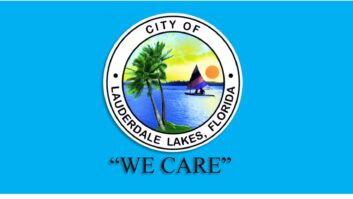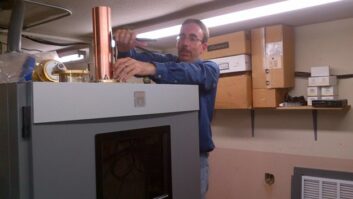Thoughts about NEC 4-1
Jul 1, 2009 12:00 PM, By John Battison, P.E., technical editor, RF
As the use of AM directional antennas began to become more widespread, a growing need was perceived for a more precise and less laborious method of designing these complex antenna systems. Up until that time most directional antennas were designed with the aid of a slide rule and or a mechanical calculator (the forerunner of the computer). The computer was in its infancy and a number of consulting engineers had constructed their own programs that took the place of the slide rule and its accessories when designing an AM directional antenna. As might be expected sometimes there were slight differences in the mathematical designs and algorithms. As a result, directional antenna designs produced by different algorithms using the same basic input might have very slight differences.
This was brought to my attention rather abruptly one day when an FCC engineer telephoned and said there was a slight difference between his figures and mine on a particular radial on a pending application. My results had been produced (illicitly) on a very large super computer. The difference was small, less than a quarter of a millivolt, but my figures didn’t match the Commission’s in this one instance. Fortunately, we settled the matter to our mutual satisfaction. However, in retrospect it seemed to indicate that the directional antenna design profession might require a mutually available and easily used mathematical program.
At the time, computers were just becoming available to the common man, and if I remember correctly it was the old Radio Shack TRS-80 computer platforms that became the first computer exposure for many engineers. As computer production price and quality improved many engineers developed their own antenna programs in the old simple computer language. One of the earliest commercially available computer-generated ground wave and skywave radiation patterns for a given set of operating conditions that I know of was provided by Dataworld. And it was very useful, but the problem remained that any change in the shape of the ground wave pattern nearly always changed the skywave values and required further ground wave computation ad nauseam. Several engineers developed their own programs and offered them for sale to other engineers. Many of these programs were very successful.
An improved method
As time passed and DA design work received increasing attention, it became obvious that more information was needed about how the antenna worked in its environment once constructed. This led to antenna modeling and the use of method of moments calculations for directional antenna design. The mathematical wizards and the Lawrence Livermore laboratory began to develop programs using the NEC classification. NEC-2, developed by Jerry Burke, J. Poggio and J.L. Smith, offered a means of individually analyzing, in effect, the modeling of the antenna’s actual operation and developed a starting set of values so that the array could be set-up and then manually brought into the desired operating conditions.

An early tool of the early trade: the slide rule.
The root of the problem was perceived to be based on the fact that the original directional antenna parameters were developed on the basis of mathematical calculations, which did not always precisely agree with the results obtained by modeling the proposed antenna system. Actual physical modeling was not always possible, nor results perfect, using scaled operating frequencies and model construction. It required a mathematically based modeling program, which took into account the physical differences and influences of the actual operating components in the system. Basic directional antenna design had been based on antennas with a single drive source. Broadcast DAs in effect use multiple sources to drive the various radiators of a multitower system because each antenna element either acts as a power source or in the case of a negative tower, a power subtraction.
In order to model complex structures it was necessary to combine two electric field integral equations (EFIE) for small wires and the magnetic field integral equation (MFIE) for plane surfaces. The EFIE works well for very thin wires with decreasing size. To ensure accuracy, segment wire lengths should be kept to less than 1/10 of a wavelength.
NEC was under development for more than 10 years and earlier versions were known as BRACT and AMP. It is basically a hybrid compilation that models objects in wire form using electric field integral equations, and a magnetic field integral equation when modeling closed surfaces that have time harmonic excitation. It is probably one of the most valuable tools available to antenna designers and a NEC-4 is written using Fortran 77. A user either purchases or licenses, the NEC-4 program and Lawrence Livermore includes a source code set up for the Intel visual Fortran compiler. In addition a slightly stripped down version is also included that should compile with most UNIX Fortran compilers. (When using the UNIX version, it is necessary to type the file names rather than selecting them from a dialog box.)
Another Lawrence Livermore computer wizard named Kok Chen has developed an additional version that compiles with the free Fortran compiler on the Macintosh computer so that most users appear to be well covered. Chen can also supply a GUI named Cocoal NEC that works with NEC-2. It’s planned to develop a version for use with NEC 4-1.
Plotting programs are available (source and window executables) that will read the input or output files and plot the model, radiation, patterns and input impedance versus frequency with Windows executables that have been compiled for use with Windows. The code originally was designed for use with fixed sized arrays and executables have been compiled for a number of sizes up to and 11,000 � 10,000 matrix. Recently they have been including a version that allocates the matrix to a size controlled by an input command. One of the nice features of working with Lawrence Livermore seems to be the fact that Jerry Burke is available to provide invaluable information.
E-mail Battison at[email protected].







